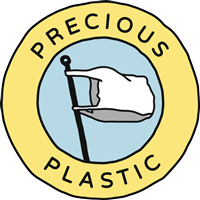
This article is part of Precious Plastic, a One Army project tackling the plastic waste problem. You can learn more
here.
While traveling across the planet tackling the plastic problem, from Africa to Latin America and South East Asia, we have seen a seemingly positive trend arising. Through the last few years a growing number of cities, countries and communities started banning single use plastics. The main culprit of this trend being our unwanted friend, the plastic bag. But what does the plastic bag represent? Why is it the focal point of this movement of restrictions, and, more importantly, are these bans effective in any way?
Some serious numbers...
The plastic bag is the ultimate symbol of consumer convenience 🛍. An easy option for the spontaneous purchase you didn’t plan for when leaving the house (yes, we’ve all done it). Problem is, this bag has an average usage time of around 12 minutes, and we’re using roughly 150 per person, per year. That’s a collective of around 500 billion bags a year entering our sewage systems, oceans, landfills, and food chains. Slowly degrading into microplastics or drifting around for hundreds of years to come.
Hundreds of years is the price the earth pays for 12 minutes of convenience.
It makes sense then, that the plastic bag should be the first to go. 32 countries and counting have a total plastic bag ban so far, with more charging taxes, or having a partial ban.

A severe punishment in Kenya
Nearly half of the world’s plastic bag bans are happening in Africa, linked not only to environmental concern, but also to public health and farming. Plastic bags are often linked to bouts of malaria, by clogging drains and encouraging mosquito swarms… gross 😷
We’ve experienced this ourselves when we visited Kenya last year, where the most unforgiving plastic bag legislation has been implemented; makers, sellers, and importers can be given 19,000 dollar fines and 4 years in jail. Yep, you heard that right.
These bans are often properly implemented on the ground. Morocco, for instance, already has some figures on the first couple of years from the ban. “Approximately 5 billion MAD (about €500.000) in fines was imposed on 757 judgments. More than 750 tons of plastic bags were seized in workshops and outlets. More than 89 tons were collected at border inspection posts.”


A recent development that caught our attention was the approval of a proposal set out by the European Parliament, which tries to ban most single-use plastic by 2021. It is interesting to see how the EU hasn’t limited its proposed policy to bags but extended to a wide variety of single-use plastic items, being recognised for the issues that they create in connection to oceans and marine life.
Single use or reusable alternative?
While the focus and reasons for plastic bans differ, any progress is good progress, right? Well, that seems logical, but of course, nothing is ever that simple. The truth is that disposable products require far fewer resources to make, rather than their reusable alternatives. Research carried out by Denmark’s Ministry of Environment and Food found that paper bags need to be used 43 times if they are to match or lessen the environmental impact caused by the making and single use of a disposable plastic bag. For an organic cotton bag, that number jumps up to 20,000 uses. Our minds start to turn to mush at this point too. Because of data like this, some countries such as Iceland, have chosen to reject the implementation of plastic bans. Perhaps this just isn’t the answer?
Moreover, plastic bags are often replaced by woven fabric bags which are made from polystyrene or PP. Doesn’t feel like plastic but it is. No more, no less. Oil is at source. And won’t be nice in the environment one way or another. Sure, it can be used multiple time (not many actually), but still.. The problem persists.

What to do?
Now, we don’t claim to be experts on the solution to this issue of legislation and rules. In fact, they are really not our things. However, we believe something in the approach is missing. In this growth of the banning of plastic products, only time will tell if we’re seeing the beginnings of a movement, or simply just a trend, that will come and go as quickly as the 80’s leg warmer (R.I.P ⚰)
Either way, we need to find sustainable, and systematic solutions to these problems, creating viable alternatives and investing in new materials that will lower the impact of production and long-term environmental effect.
So for now, let’s do our part. While making sure to skip the plastic bag (as there’s still billions of the nasty things drifting around in our environment) let’s think about kick-ass ways to turn them into precious, lifelong products. Take our very own Galina, Russian LDPE master has been developing her own project, ‘Plastic Doom’, turning plastic bags into fashionable items like bucket hats, fanny packs, and incredible rain jackets. So awesome in fact, that most of the team are now repping Plastic Doom in their day-to-day outfits. If you fancy joining team Plastic Doom, check out her bags on the Bazar.


That’s all for now. Let us know what you think about this article in the comments below and enjoy holiday time with family and friends.
Love from Holland.





.svg)

